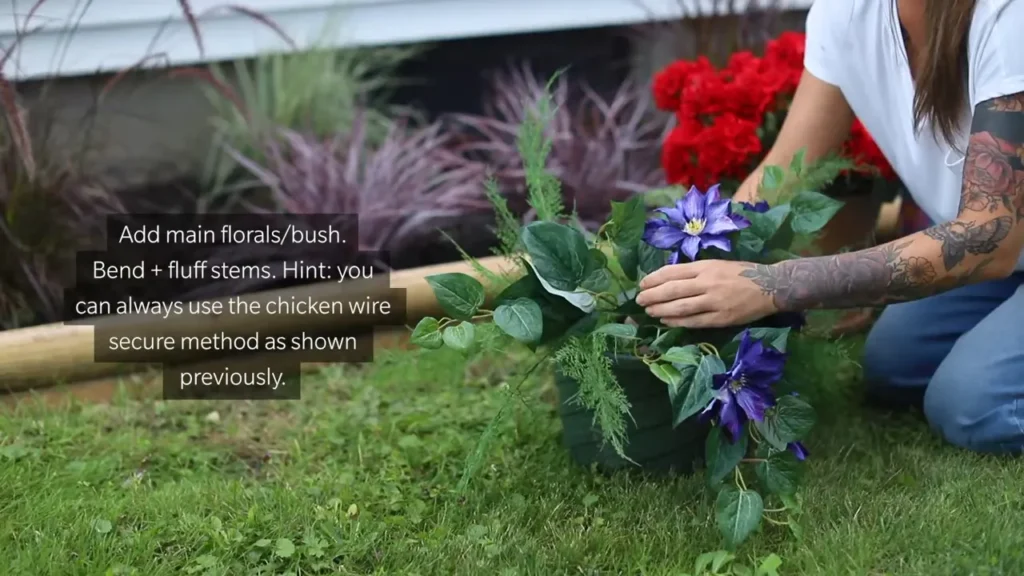Initially, here are the inquiries frequently posed by individuals concerning artificial plants.
Fake indoor plants, whether at home or in the office, tend to offer a net benefit rather than being counterproductive. In contrast to real plants within the indoor environment, they elicit a sense of wonder when observed. Yet, if you place them on a balcony during a refreshing rainfall and take a seat, you may experience a delightful chill while savoring the enchanting dance of raindrops and the flow of water, all while enjoying a cup of coffee. This addition elevates the aesthetic of the household, signifying a sense of sophistication and elegance.
The distinction between indoor plants and artificial counterparts lies in the fact that while both contribute to the aesthetic appeal of a home, the latter is incapable of generating oxygen through the process of photosynthesis.
Houseplants excel in infusing a modest touch of organic and natural ambiance into one’s home after a weary day, revitalizing both the body and mind; however, their longevity is limited, and they gradually wane over time.
Moreover, artificial plants possess resilient leaves that remain steadfast, serving as a source of visual delight, fostering self-composure, alleviating psychological strain, and imparting the motivation and fortitude to engage in meaningful conversations with family members in those moments.
To be candid, there exists a divergence of opinions regarding the efficacy and advantages of artificial plants. Some prevalent queries and reservations pertain to their potential drawbacks, such as whether they may induce cancer in pets and the elderly, pose harm to aquarium fish, or possess sound-absorbing properties.
At day’s end, our adept team of professionals, interviewers, web researchers, and specialists labor tirelessly in pursuit of resolutions to these inquiries. Thus, please continue reading, and feel free to provide feedback if any query remains unanswered.
Do fake plants look tacky?

A frequently asked question regarding artificial plants in the United States concerns whether they come across as tacky. As rightly noted, there exist low-quality items on the market that give off a tacky appearance.
The search interest in this keyword is incredibly high, prompting us to craft a comprehensive article addressing the topic.
We’ve previously pointed out that lower-priced artificial plants often have a subpar appearance, whereas those with a slightly higher price tag tend to be of better quality.
When purchased at a reasonable cost, it will exhibit a robust, attractive, and authentic appearance.
Expecting to get realistic looking artificial plants for less money is nothing but foolhardy.
To preserve quality, you must be willing to invest your money.
By spending a decent sum, you can acquire high-quality artificial plants that closely resemble the real deal, without even a hint of tackiness.
Large indoor artificial plants can effortlessly deceive both guests and children.
Indeed, it’s been acknowledged that certain artificial plants available in the market might appear unsophisticated. Therefore, consider procuring our carefully curated products online.
Although live plants win in comparison, those who are smart and spend money often change live plants.
Do fake plants absorb sound?
In thick, secluded woods, the trees soak up sound more effectively than in open areas, contributing to an unsettling ambiance within the forest’s profound silence.
As per the data, plants have the capacity to absorb a substantial 56% of the sound within a room.
hey remember
It can indeed absorb a solid 56%.
When it comes to sound absorption, fake plants can capture sound almost as well as real ones, and that’s quite an odd, amusing fact.
Their branches, leaves, tips, and cells have the capability to absorb an equivalent amount of sound.
But can every artificial plant absorb noise to the same extent?
The answer is no
The amount of sound a tree will absorb depends on where it is placed or its structure.
Artificial plants can be employed to diminish sound levels in various settings such as businesses, schools, offices, or bedrooms, with dense foliage and bushy plant varieties proving highly efficient at reducing sound intensity through sound reflection.
Out of the numerous fake plant categories, two standout options are artificial ferns and artificial rubber plants. These selections excel in swiftly absorbing sound, aiding in the reduction of noise pollution.
do artificial plants fade in the sun?
Sunlight is a source of beneficial energy for all living beings, but certain inanimate objects like artificial plants or flowers should be shielded from direct sunlight. Many individuals choose to cover them with cloth to prevent dust accumulation.
Just as sunlight, rainwater, and metallic objects can create mirages, artificial plants and flowers can likewise deteriorate and sustain damage from sunlight, visible light, and solar heat, potentially causing significant harm.
Artificial plants might risk getting scorched by the scorching sun’s rays if placed outdoors or on the balcony, which is why they are typically reserved for indoor decor, like in the drawing room.
Nonetheless, in the event it needs to be situated outside on the balcony for certain reasons, are there any specific measures to shield it from deterioration?
UV artificial plants spray plays a very effective role in this regard.
If it is used on the branches, tips, flowers, leaves of the tree, the moisture there increases, the vitality of the plant or the ability to survive in adverse environment increases up to 2-3 years (maximum), finally it lasts for many years.
An array of artificial plant varieties can be found in the market, and among these, UV-resistant varieties stand out. For those concerned about fading, a simple fix lies in regular rotation and cleaning of the plant.
do artificial plants attract bugs?
In the realm of live plants, butterflies typically flit about in search of nectar, alongside other insects, drawn by the scents of leaves and blossoms during the daylight hours.
During a delightful evening repast, an airborne visitor occasionally alights upon a shirt or a young girl’s frock, is then flicked off with a finger.
Now it’s riddiculous that their attacks are rampant only when guests come with their children, They manage to infiltrate beneath the children’s shirts, and occasionally, the scent of the insect lingers on the fingers if one manages to catch them.
Do artificial plants attract insects in the same way? Do they emit a fragrance akin to that of real plants? Butterflies, moths, and insects do not show any interest in fake plants.
Construction of fake plants: Artisans usually make them out of rubber, plastic, and silk, and they are not as susceptible to insect attack as other inanimate objects.
That doesn’t imply it’s insect-repellent; insects may still be drawn to it.
The location where you place the plant can determine its susceptibility to insects, with the pot being a particularly influential factor.
Exercise caution when altering the potting soil, And you have to pay special attention to that since ant infestations can occasionally emerge around or within the pot, stemming from the ground to the plant’s substrate. In such instances, sprinkling a kind of ant spray will reduce the infestation.
Arrange synthetic plants around the office desk, table, or in the drawing room, ensuring a consistently clean environment to prevent colony of ants infestations on the plant pots (material).
So it can be understood that fake plants can be infected by insects.
Applying insecticides to young plants will deter insects from propagating the toxins.
Online, one can find gentle insect deterrents or organic insecticide sprays capable of exterminating bugs.
Do artificial plants cause cancer?

Is it a concern that artificial plants could potentially lead to cancer?
This is a frequently asked question regarding safeguarding family health.
We are aware that certain types of plastics have been associated with cancer, and fake plants are typically constructed from one variety of plastic.
Upon closer examination, one can discern that numerous items in our vicinity, such as televisions, refrigerators, laptops, washing machines, and more, are constructed using plastic. Plastics possess the potential to trigger the formation of cancerous cells within the body.
But not all types of plastic spread cancer cells, or some plastics contain very little plastic.
Plastic can pollute the air by gassing when cold or hot, depending on how much plastic is in it
Opt for artificial plants available in reputable brand stores, which are crafted from organic materials, and that do not spontaneously release harmful organic compounds into the air.
For those with a heightened apprehension regarding plastic and gaseous concerns, numerous individuals choose to display artificial plants outdoors, enhancing the aesthetic appeal of their surroundings.
If in an outdoor location, place the plant on a deck or patio
So even if the off-gassing is released from there, you will be very far away, that is, ultimately you will not be harmed.
Do artificial plants last outdoors?

Indeed, a prevalent sight it is, as numerous individuals adorn their entrance doors with artificial plants to elevate the visual allure.
However, the longevity of these plants hinges on factors such as, which shop or brand they are taken from, the diligence of maintenance, and the impact of sunlight exposure.
And it’s par for the course.
Occasionally, you might stumble upon top-notch products at bargain prices, but that doesn’t imply you should snatch up just any when investing in nearly natural items, Should you neglect its needs in less humid environments and fail to provide proper care, it becomes susceptible to deterioration from sunlight and other elements, especially in full-sun settings.
If you possess the knack for selecting top-notch products, follow through with vigilant care by regularly rotating them, Protect on excessively hot or rainy days, and mastering the application of UV spray, then this plant has the potential to endure for numerous years.
Some good quality, long lasting outdoor fake plants include agave plants, boxwood topiary.
Begin by scouting the store; upon arriving, choose one, two, three, or even four items from the highest price bracket, make your preferred selection, and engage in a discussion with the storekeeper regarding the UV spray.
Final thoughts on these questions about fake plants
Whether adorning the backyard or seamlessly transitioning from the dining room to the drawing room and out to the balcony, fake plants attract people like a magnet, enhance the beauty of the room, because they look exactly like the real thing.
Gazing upon the color green prompts a natural response, causing eyelids to gently close, relieving the tension in one’s head, and bestowing a refreshing, organic ambiance upon the room.
Choosing artificial plants for the house is not a difficult task, with a bit of effort, you can locate numerous shops throughout California offering high-grade faux plants.
While we haven’t addressed every conceivable question here, as much as we have been able to cover, many of your questions will be answered in the comment section. So, don’t hesitate to pose your question without further delay.
In forthcoming updates to this article, we aim to encompass responses to a wide spectrum of questions, akin to the comprehensive information found on Wikipedia.
Like an encyclopedia
In the interim, we encourage you to leave your comments, as we intend to revise the article with your questions and contributions.
You may have a diverse range of inquiries, and our repository of answers is at your disposal for all of them.
Together, we can lend a hand to one another in our community.


